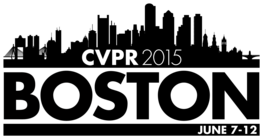-
Supervised Mid-Level Features for Word Image Representation
AbstractThis paper addresses the problem of learning word image representations: given the cropped image of a word, we are interested in finding a descriptive, robust, and compact fixed-length representation. Machine learning techniques can then be supplied with these representations to produce models useful for word retrieval or recognition tasks. Although many works have focused on the machine learning aspect once a global representation has been produced, little work has been devoted to the construction of those base image representations: most works use standard coding and aggregation techniques directly on top of standard computer vision features such as SIFT or HOG. We propose to learn local mid-level features suitable for building word image representations. These features are learnt by leveraging character bounding box annotations on a small set of training images. However, contrary to other approaches that use character bounding box information, our approach does not rely on detecting the individual characters explicitly at testing time. Our local mid-level features can then be aggregated to produce a global word image signature. When pairing these features with the recent word attributes framework of Almaz\'an et al., we obtain results comparable with or better than the state-of-the-art on matching and recognition tasks using global descriptors of only 96 dimensions.
Related Material
[pdf][bibtex]@InProceedings{Gordo_2015_CVPR,
author = {Gordo, Albert},
title = {Supervised Mid-Level Features for Word Image Representation},
booktitle = {Proceedings of the IEEE Conference on Computer Vision and Pattern Recognition (CVPR)},
month = {June},
year = {2015}
}
CVPR 2015 open access
These CVPR 2015 papers are the Open Access versions, provided by the Computer Vision Foundation.
Except for the watermark, they are identical to the accepted versions; the final published version of the proceedings is available on IEEE Xplore.
Except for the watermark, they are identical to the accepted versions; the final published version of the proceedings is available on IEEE Xplore.
This material is presented to ensure timely dissemination of scholarly and technical work.
Copyright and all rights therein are retained by authors or by other copyright holders.
All persons copying this information are expected to adhere to the terms and constraints invoked by each author's copyright.

